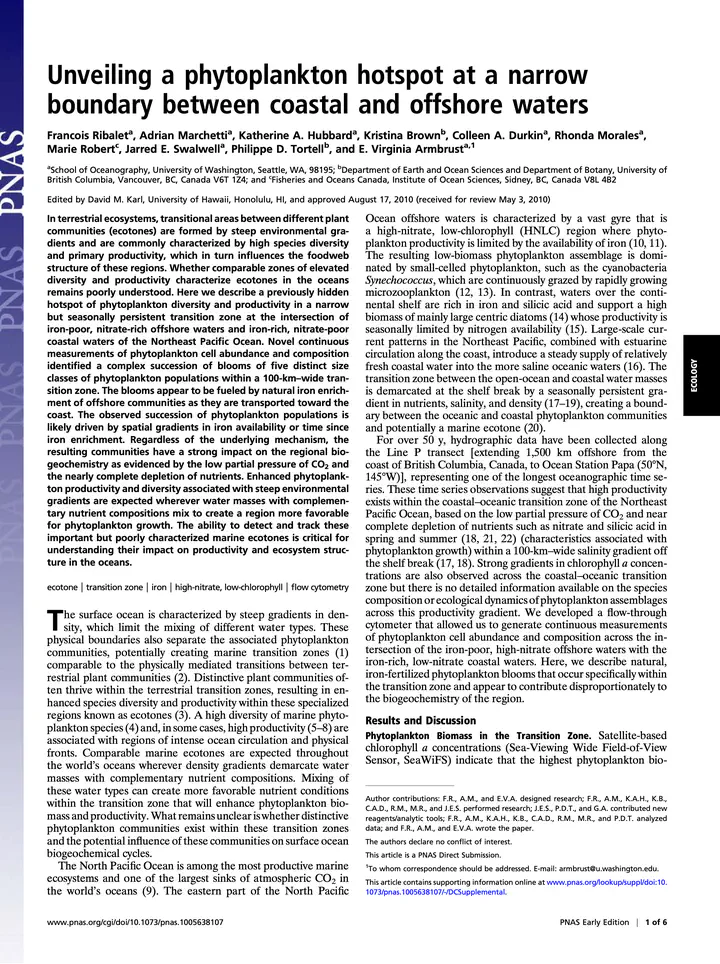
Abstract
In terrestrial ecosystems, transitional areas between different plant communities (ecotones) are formed by steep environmental gradients and are commonly characterized by high species diversity and primary productivity, which in turn influences the foodweb structure of these regions. Whether comparable zones of elevated diversity and productivity characterize ecotones in the oceans remains poorly understood. Here we describe a previously hidden hotspot of phytoplankton diversity and productivity in a narrow but seasonally persistent transition zone at the intersection of iron-poor, nitrate-rich offshore waters and iron-rich, nitrate-poor coastal waters of the Northeast Pacific Ocean. Novel continuous measurements of phytoplankton cell abundance and composition identified a complex succession of blooms of five distinct size classes of phytoplankton populations within a 100-km - wide transition zone. The blooms appear to be fueled by natural iron enrichment of offshore communities as they are transported toward the coast. The observed succession of phytoplankton populations is likely driven by spatial gradients in iron availability or time since iron enrichment. Regardless of the underlying mechanism, the resulting communities have a strong impact on the regional biogeochemistry as evidenced by the low partial pressure of CO 2 and the nearly complete depletion of nutrients. Enhanced phytoplankton productivity and diversity associated with steep environmental gradients are expected wherever water masses with complementary nutrient compositions mix to create a region more favorable for phytoplankton growth. The ability to detect and track these important but poorly characterized marine ecotones is critical for understanding their impact on productivity and ecosystem structure in the oceans.